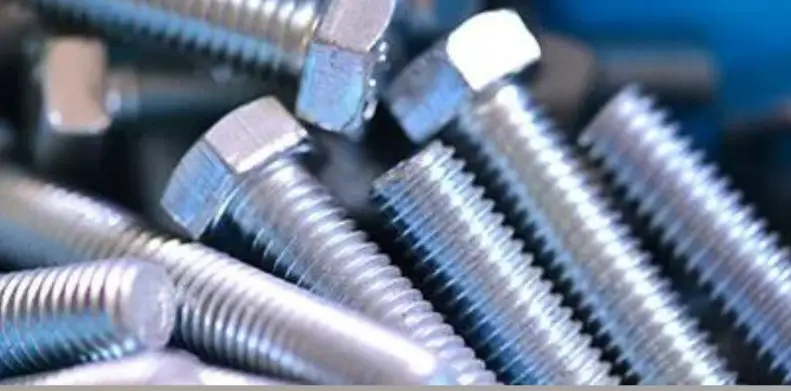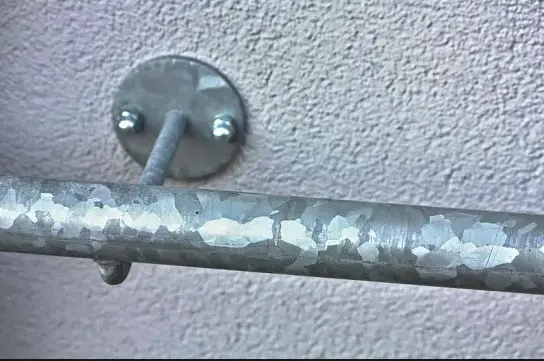Metals play a pivotal role in a wide array of industries, from construction and automotive to electronics and home appliances. Ensuring these metals can withstand the rigors of their applications involves protective coatings, among which Zintec and galvanised steel are prominent. Each of these coatings has distinct characteristics and benefits, designed to enhance the metal’s durability and resistance to corrosion.
Zintec and galvanised steel differ primarily in their composition and production processes. Zintec steel is cold-rolled steel coated with a thin layer of zinc through electroplating, offering smoothness and paintability ideal for interior environments. Galvanised steel, however, is hot-dipped in molten zinc, resulting in a rugged coating more suited for outdoor applications due to its superior corrosion resistance.
The choice between Zintec and galvanised steel hinges on the specific needs of the project, including environmental exposure, aesthetic considerations, and cost. Zintec is favored for its excellent surface finish and suitability for painting, making it ideal for cosmetic applications indoors. On the other hand, galvanised steel stands out in outdoor settings where its robust zinc coating provides long-lasting protection against the elements.

Zintec Explained
Definition
Zintec is a term that refers to cold-rolled steel coated with a thin layer of zinc through an electroplating process. This combination of materials offers a corrosion-resistant finish that is both durable and aesthetically pleasing. Unlike other steel coatings, Zintec specifically provides a smooth and uniform surface that is ideal for applications where appearance and paintability are crucial.
Production Process
The production of Zintec involves several key steps:
- Cleaning: The steel is thoroughly cleaned to remove any impurities that could affect the quality of the zinc coating.
- Electroplating: The clean steel is then passed through an electroplating bath, where an electrical current is used to deposit a thin layer of zinc onto the steel’s surface.
- Finishing: After plating, the steel may undergo additional processes, such as temper rolling, to achieve the desired surface texture and mechanical properties.
This meticulous process ensures that Zintec steel has a high-quality finish with excellent corrosion resistance.
Key Features
Zintec steel boasts several important features that make it a preferred choice for many applications:
- Excellent Surface Quality: The smooth, clean finish is ideal for painting or direct application.
- Corrosion Resistance: The zinc coating protects the steel from rust and corrosion.
- Workability: Zintec can be easily formed, drilled, or welded, offering versatility in manufacturing.
- Cost-Effective: Compared to other protective coatings, Zintec is relatively economical, especially for indoor applications.
Applications
Due to its unique properties, Zintec is used in a variety of applications, particularly where aesthetics and corrosion resistance are important:
- Automotive parts: For components that require a clean finish and resistance to rust.
- Electronics casings: Offers protection and a surface suitable for painting.
- Domestic appliances: Used in parts where durability and appearance are key.
- Interior construction: In components that need a visually appealing finish.
Galvanised Metal
Definition
Galvanised metal refers to steel that has been coated with a protective layer of zinc to prevent rusting and corrosion. The zinc acts as a barrier between the steel and the environment, significantly extending the metal’s lifespan. The process involves the steel being dipped into molten zinc, creating a robust layer that is highly resistant to environmental stressors.
How It’s Made
The galvanisation process includes several crucial steps:
- Surface Preparation: Steel surfaces are cleaned to remove any impurities, often through a degreasing or pickling process.
- Dipping: The prepared steel is then immersed in a bath of molten zinc at temperatures around 450°C (842°F).
- Cooling: After coating, the steel is cooled either in air or by quenching in water, forming a tightly bonded zinc layer.
This process creates a thick, durable coating that is integral to the steel’s resistance to corrosion and wear.
Characteristics
Galvanised metal is distinguished by several key characteristics:
- Rugged Surface: The zinc coating provides a somewhat rough texture, which can be beneficial for certain applications.
- Superior Corrosion Resistance: The zinc coating sacrifices itself to protect the underlying steel from rust.
- Longevity: Galvanised steel has a significantly extended lifespan, especially in outdoor environments.
- Versatility: Suitable for a wide range of applications, from construction to automotive.
Uses
Galvanised steel is widely used in applications where durability and resistance to harsh conditions are paramount:
- Outdoor construction: In structures exposed to the weather, such as bridges, fences, and railings.
- Automotive: In parts that must resist rust and corrosion.
- Agricultural: In equipment and structures that require durability.
- Industrial: For machinery and structural components that face exposure to moisture and chemicals.
Comparing Zintec and Galvanised
Physical Properties
While both Zintec and galvanised steel are designed to provide corrosion resistance, their physical properties differ:
- Surface Texture: Zintec offers a smoother finish, while galvanised steel is rougher.
- Thickness of Coating: Galvanised steel generally has a thicker zinc coating compared to Zintec.
- Flexibility: Zintec, being thinner, is often more flexible than galvanised steel.
Corrosion Resistance
- Zintec is suitable for indoor use where it is not exposed to harsh weather, providing sufficient protection against rust.
- Galvanised steel, with its thicker zinc coating, is better suited for outdoor applications, offering superior protection against harsh environmental conditions.
Aesthetic Differences
- Zintec has a cleaner, smoother appearance, making it ideal for applications where aesthetics are important.
- Galvanised steel has a more industrial look, with a visibly textured surface that can be less appealing for interior use.
Cost Analysis
- Zintec is generally more cost-effective for indoor applications, where the conditions are less demanding.
- Galvanised steel, while initially more expensive due to the thicker coating and more intensive process, may offer better value over time in outdoor or harsh environments due to its superior durability and longevity.

Environmental Impact
The production and application of coatings like Zintec and galvanised steel have a tangible impact on the environment. This section delves into the sustainability, recycling, and carbon footprint associated with these materials, highlighting the importance of making informed decisions.
Sustainability of Production
Zintec Steel
- Reduced Waste: The electroplating process used in Zintec production is more controlled, leading to minimal excess zinc and reduced waste.
- Energy Efficiency: Electroplating requires less energy compared to hot-dip galvanising, making Zintec a more energy-efficient option in terms of production.
Galvanised Steel
- Longevity: Galvanised steel’s durability means longer life spans for products, reducing the frequency of replacement and, consequently, the demand for raw materials and energy for production.
- Resource Intensive: The hot-dip galvanising process is resource-intensive, consuming more zinc and energy, which can impact sustainability goals.
Recycling and Reusability
Both Zintec and galvanised steel are highly recyclable, contributing to their environmental credentials:
- Steel Recycling: The base material of both coatings is steel, which is one of the most recycled materials in the world. Recycling steel saves valuable raw materials and requires less energy than producing new steel.
- Zinc Recovery: Zinc from the coating process can also be recovered and reused, although the efficiency of zinc recycling can vary between Zintec and galvanised methods.
Carbon Footprint
- Production Phase: The carbon footprint during production is generally higher for galvanised steel due to the energy-intensive nature of the hot-dip process.
- Use Phase: Galvanised steel, with its extended durability, often results in a lower overall carbon footprint over the life cycle of a product due to decreased replacement needs.
- Recycling Phase: The recycling process for both materials further reduces their carbon footprint, emphasizing the importance of recycling initiatives.
Choosing the Right Coating
Selecting between Zintec and galvanised coatings involves balancing industry requirements, environmental considerations, and budget constraints. This decision can significantly impact the sustainability, performance, and cost-effectiveness of a project.
Industry Requirements
Different industries have specific needs based on the applications of the metal products:
- Automotive and Electronics: Industries that require smooth finishes for aesthetic or functional purposes may prefer Zintec.
- Construction and Outdoor: Industries needing robust, long-lasting materials often choose galvanised steel for its superior corrosion resistance.
Environmental Considerations
- Indoor vs Outdoor Use: Zintec, with its lower environmental impact during production, is suitable for indoor applications, while galvanised steel is better for outdoor settings due to its durability.
- Recyclability: The commitment to recycling and the infrastructure available can influence the choice, as both materials are recyclable but have different processes and efficiencies.
- Carbon Footprint: Companies focusing on reducing their carbon footprint might lean towards Zintec for applications where its characteristics are sufficient, due to its lower energy production process.
Budget Constraints
- Initial Costs: Zintec is generally more cost-effective for applications not exposed to harsh environmental conditions, primarily due to its less resource-intensive production process.
- Lifecycle Costs: For projects where longevity and minimal maintenance are critical, galvanised steel, despite its higher initial cost, may prove more economical over time.
Choosing the right coating requires a comprehensive analysis of these factors, ensuring that the selected material meets the project’s needs while aligning with environmental and budgetary considerations. By prioritizing sustainability and efficiency, manufacturers and consumers can contribute to a more sustainable future without compromising on quality or performance.
Frequently Asked Questions
What is Zintec steel used for?
Zintec steel is commonly used in manufacturing components for the automotive, electronic, and domestic appliance industries due to its excellent surface condition and paintability. It’s particularly favored for indoor environments where corrosion resistance is needed without the exposure to harsh outdoor conditions.
How does galvanised steel protect against corrosion?
Galvanised steel protects against corrosion through a process called cathodic protection. The zinc coating acts as a sacrificial anode, meaning it will corrode in place of the steel, thereby greatly prolonging the underlying metal’s life. This makes it ideal for outdoor structures, like fences and bridges, exposed to weather elements.
Can Zintec and galvanised steel be painted?
Yes, both Zintec and galvanised steel can be painted, but they require different preparations due to their surface properties. Zintec steel’s smooth surface makes it easier to paint directly, while galvanised steel often requires a pretreatment or a primer to ensure the paint adheres well and lasts longer.
Is Zintec or galvanised steel more environmentally friendly?
Both Zintec and galvanised steel have aspects that can be considered environmentally friendly, such as recyclability. However, the environmental impact depends on factors like the production process, the longevity of the product, and end-of-life recyclability. Generally, the more durable and long-lasting the coating is, the less often the material needs to be replaced, reducing its environmental footprint.
Conclusion
Choosing between Zintec and galvanised steel requires a nuanced understanding of each material’s strengths and the specific demands of the application. Zintec offers a fine balance between aesthetics and functionality for indoor use, while galvanised steel provides unmatched durability and protection in harsh outdoor conditions. Both materials embody the industry’s ongoing commitment to innovation and sustainability, serving distinct roles in the protection and enhancement of metal products.
Ultimately, the decision hinges on assessing the environmental conditions, desired aesthetic outcomes, and cost considerations of the project. This article has illuminated the distinct pathways Zintec and galvanised steel offer to engineers, architects, and designers in their quest to optimize the longevity and performance of metal structures and components.

